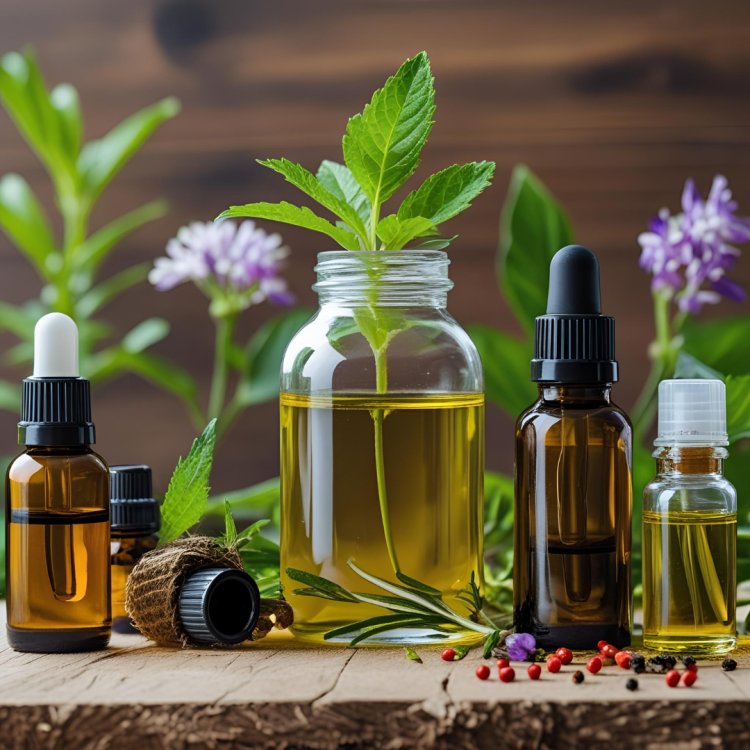Essential oils for natural pest control, improved FCR
Explore how essential oils offer natural pest control and improve poultry feed conversion, promoting healthier, antibiotic-free production.

Harnessing Essential Oils for Natural Pest Control & Optimized Feed Conversion in Poultry
Increasing concerns over synthetic chemicals and antibiotic resistance in livestock have catalyzed interest in natural alternatives. Among these, essential oils (EOs)—plant-derived volatile compounds—are emerging as versatile solutions for integrated poultry management. Their combined pest-repellent, antimicrobial, stress-reducing, and feed-optimizing effects position them as powerful tools in modern poultry systems.
1. Natural Pest Control
Essential oils are increasingly used as bio-pesticides. Composed of botanical compounds like monoterpenes and phenylpropanoids, they offer repellent and insecticidal actions without persistent residues Plant-based oils—including thyme, peppermint, eucalyptus, citronella, and clove—have demonstrated effectiveness against pests such as lice, mites, and flies in poultry settings.
Mechanistically, EOs disrupt insect nervous or digestive processes, inhibit reproduction, and damage cell membranes. For example, oregano oil is more effective than DEET against certain mites and mosquitoes when applied as a fumigant. However, volatility remains a challenge: the protective effect of EOs tends to wane quickly, usually in days, unless properly formulated.
To overcome volatility, technologies such as nanoencapsulation and microencapsulation are applied. These methods embed essential oils in carriers (nano-clays, alginate-whey microspheres, beta-cyclodextrin), providing slow, controlled release and stability, even under variable environmental conditions.
2. Improved Feed Conversion Ratio (FCR) & Poultry Growth
The benefits of EOs extend beyond pest control: they can also enhance feed efficiency and overall production. Trials with broilers supplemented with oregano essential oil have reported up to 25 % higher body weight gains, with an 8 % improvement in livability. Furthermore, Active ingredients like thymol, carvacrol, and eugenol act as natural growth promoters, supporting gut health and nutrient absorption.
These essential oils may reduce reliance on antibiotics by combating gut pathogens, bolstering immune function, and fostering a healthier microbiome, resulting in more efficient nutrient utilization.
3. Stress Reduction & Welfare Support
Certain essential oils also exhibit calming or stress-mitigating properties. For instance, lemon balm (Melissa officinalis) has been shown to reduce anxiety and stress behaviors in poultry, contributing to better welfare and feed conversion. When birds experience lower stress, their immune systems are stronger, and energy is more effectively diverted toward growth and productivity.
4. Critical Considerations in Use
Stability & Delivery Methods
Because volatility can limit efficacy, applying research-backed encapsulation techniques is key. Encapsulated oils can maintain activity through digestion in the gut, minimizing premature loss and maximizing impact.
Dosage & Safety
Essential oils contain potent bioactive compounds; dosages must balance efficacy against toxicity. Overconcentration may harm liver, kidney, or gut tissues in poultry . Hence, formulations must be rigorously tested for safety and pharmacokinetics—understanding absorption, metabolism, and elimination pathways is essential.
Consistency & Quality
Variability in plant genetics, sourcing, and extraction methods can greatly affect an oil’s chemical composition and effectiveness. Using standardized, high-grade essential oils with known active ingredient content is crucial for consistent results.
5. Toward Scalable, Sustainable Implementation
EOs offer a multi-pronged approach—simultaneously managing pests, boosting feed efficiency, promoting healthy gut flora, and supporting bird welfare. The industry is seeing an uptick in field trials combining EO blends with encapsulation technologies to develop practical, scalable solutions.
For example, nanoemulsions of clove or cinnamon oils achieved over 95 % mite control in farmers’ flocks, with improved egg production, FCR, and no chemical residues. Similarly, encapsulated thyme-oregano blends have delivered extended gut protection and better growth performance than unencapsulated forms.
6. Best-Practice Recommendations
-
Select proven EOs – Oregano, thyme, clove, peppermint, and citrus oils have abundant evidence supporting their efficacy.
-
Use encapsulated formulations – Employ technologies like nano‑clay, alginate beads, or beta‑cyclodextrin to sustain activity.
-
Partner with formulators – Work with feed scientists to establish safe, efficacious blends with dosage precision.
-
Monitor key metrics – Track pest load, FCR, body weight, behavior, and health indicators during trials.
-
Evaluate safety and residue – Ensure no negative carry-over into meat or eggs, and assess animal tissue health.
Final Thoughts
Essential oils, when implemented thoughtfully, represent a dynamic and natural solution for poultry producers. They bridge the gap between pest control, growth optimization, and animal welfare, aligning with consumer demand for antibiotic-free, environmentally sound poultry products.
While challenges remain—especially volatility and variability—advances in encapsulation and delivery systems are driving real-world success. By standardizing quality, integrating research-driven formulations, and piloting in real farm settings, poultry operations can benefit sustainably from these green alternatives.
For pestcontrolglobal.com, focusing on EO‑based integrated solutions positions the platform at the forefront of eco‑friendly poultry health and productivity.













